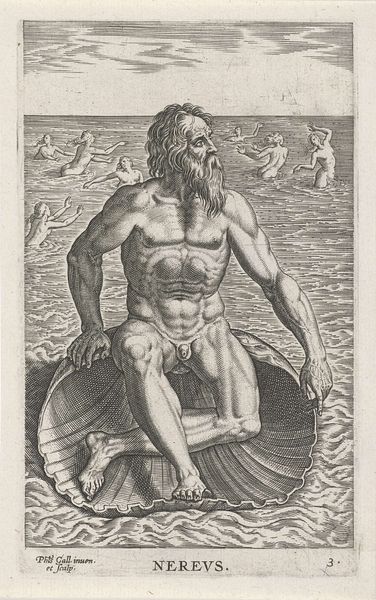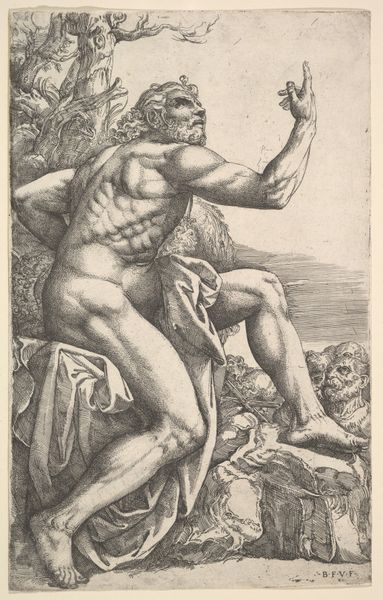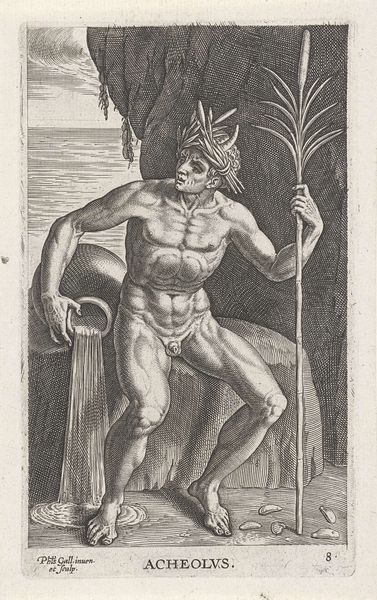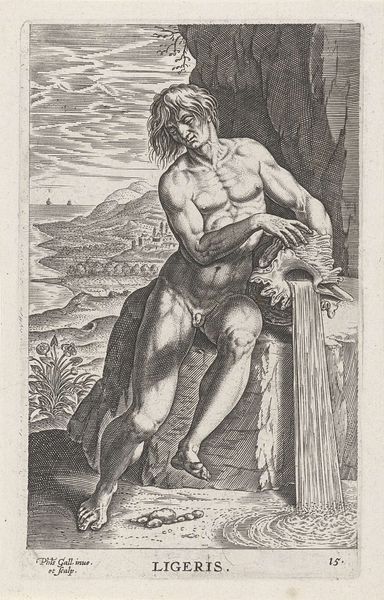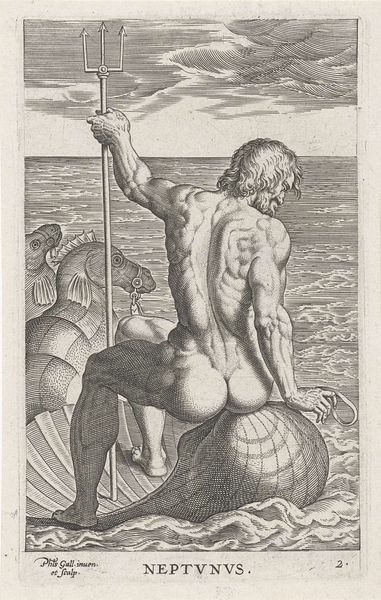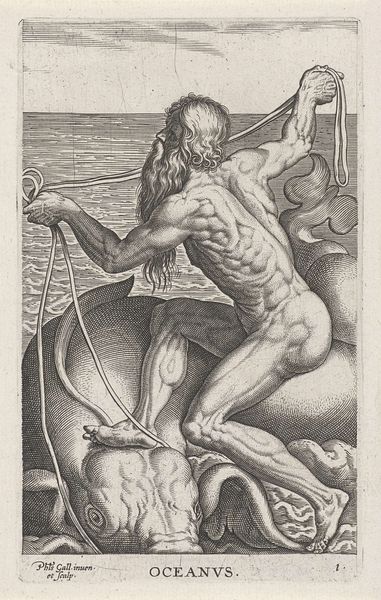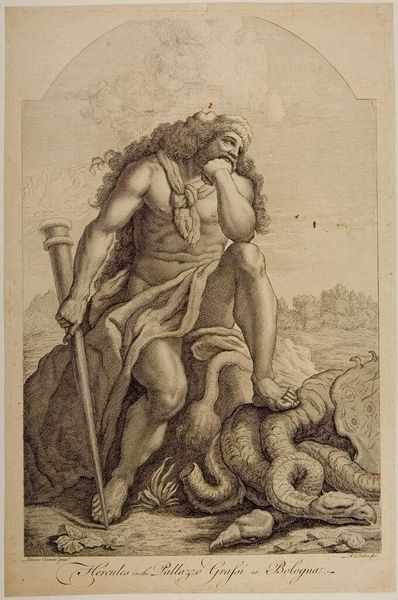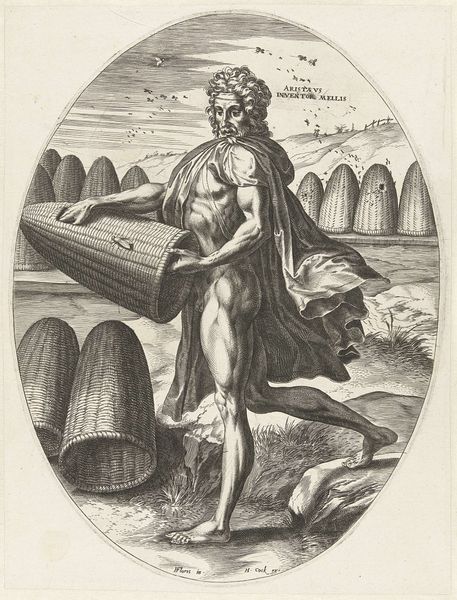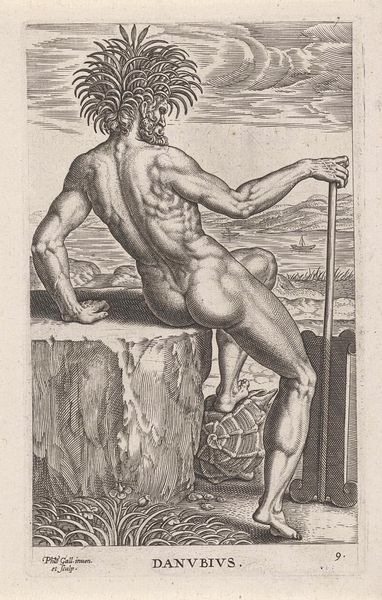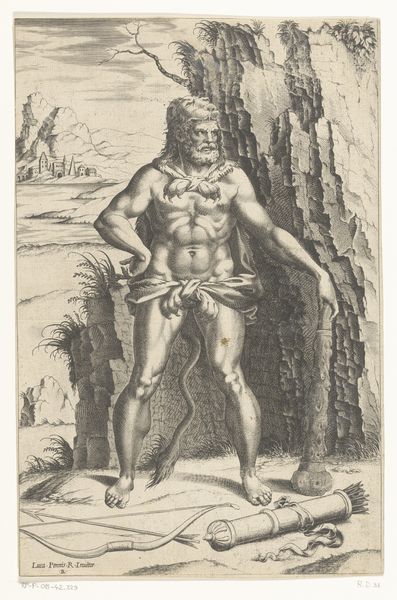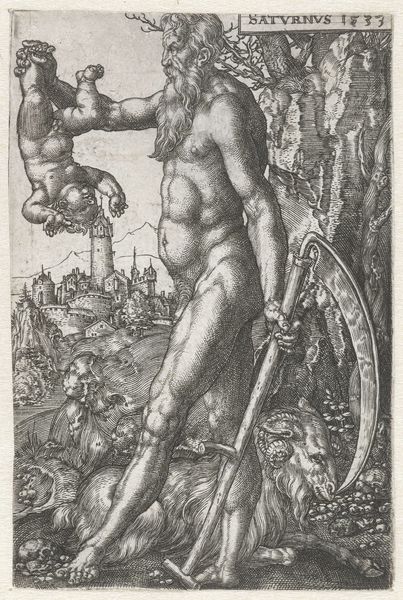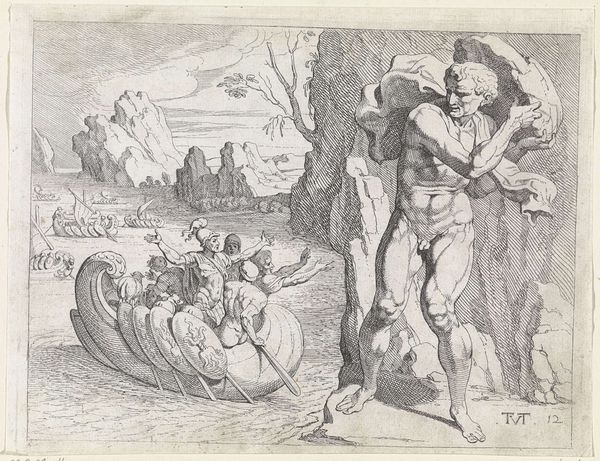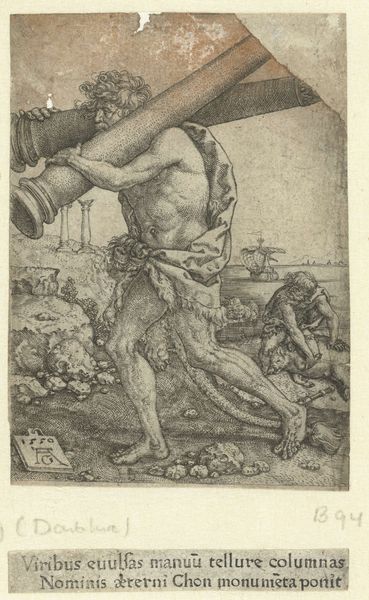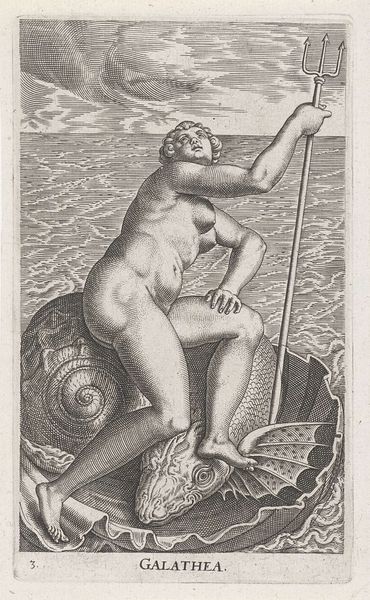
engraving
#
mannerism
#
figuration
#
history-painting
#
nude
#
engraving
Dimensions: height 165 mm, width 102 mm
Copyright: Rijks Museum: Open Domain
This is Philips Galle’s Zeegod Glaucus, an engraving produced in the late 16th century. Notice the striking contrast between the dark, densely etched foreground and the delicately rendered background. This contrast draws our eye to the figure of Glaucus, who reclines on a massive seashell. Galle masterfully uses line and texture to define form and space. The intricate network of lines not only sculpts the muscular anatomy of Glaucus but also gives a tactile quality to the shell, evoking its rough, organic surface. In the background, the sea and sky are rendered with lighter, more fluid lines, suggesting a vast, open space. The composition is divided into distinct zones – the detailed foreground, the intermediate zone of water, and the distant landscape. Each zone contributes to a sense of depth, creating a visually complex and dynamic surface. Here, Galle invites us to contemplate the interplay between the tangible and the ethereal, the finite and the infinite.
Comments
No comments
Be the first to comment and join the conversation on the ultimate creative platform.
